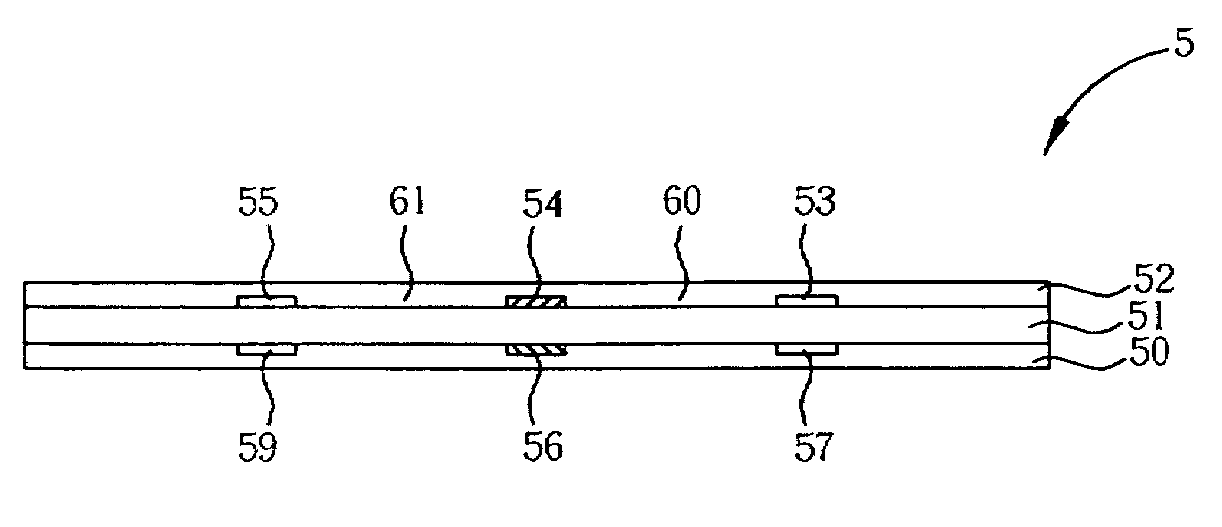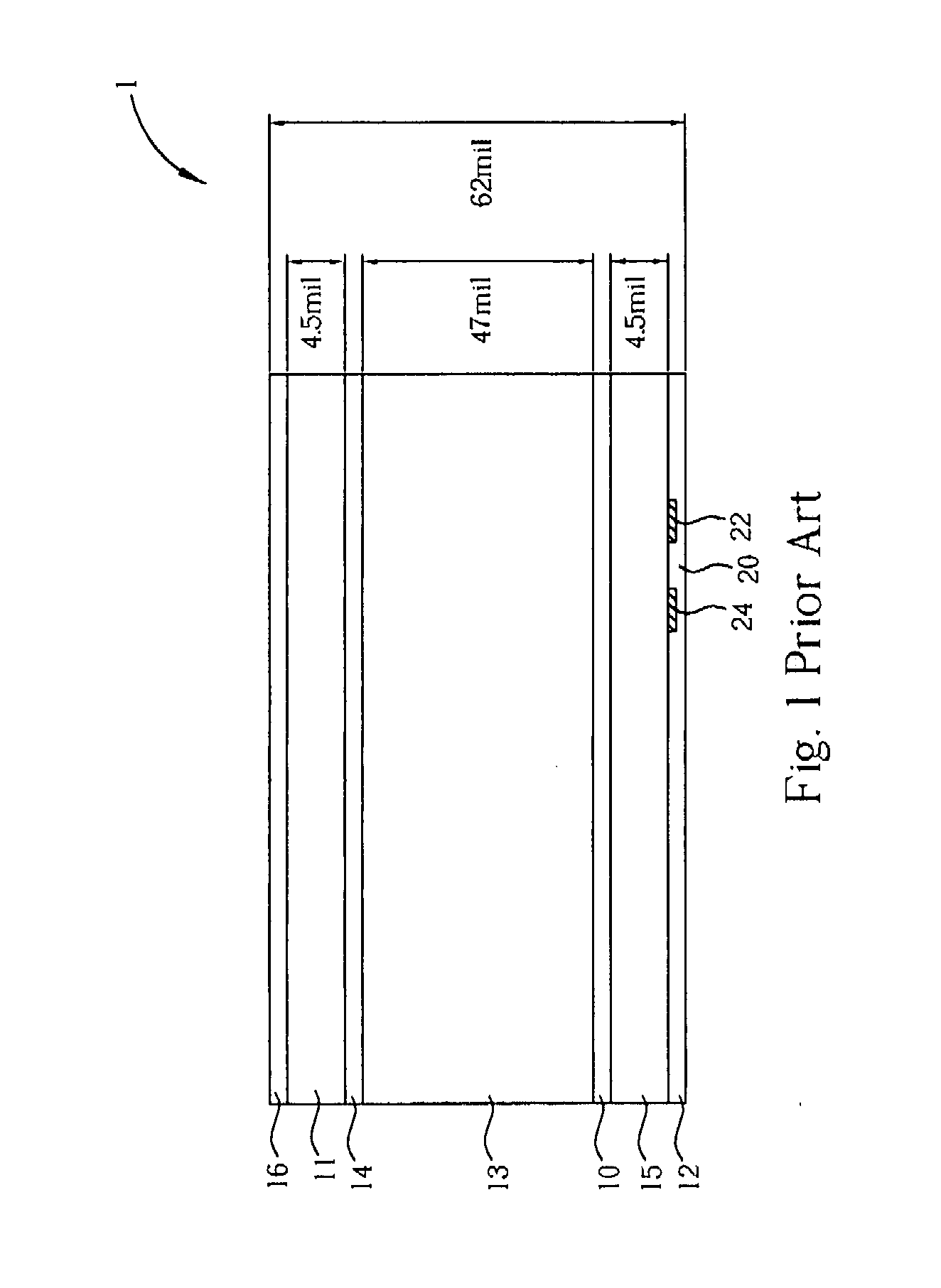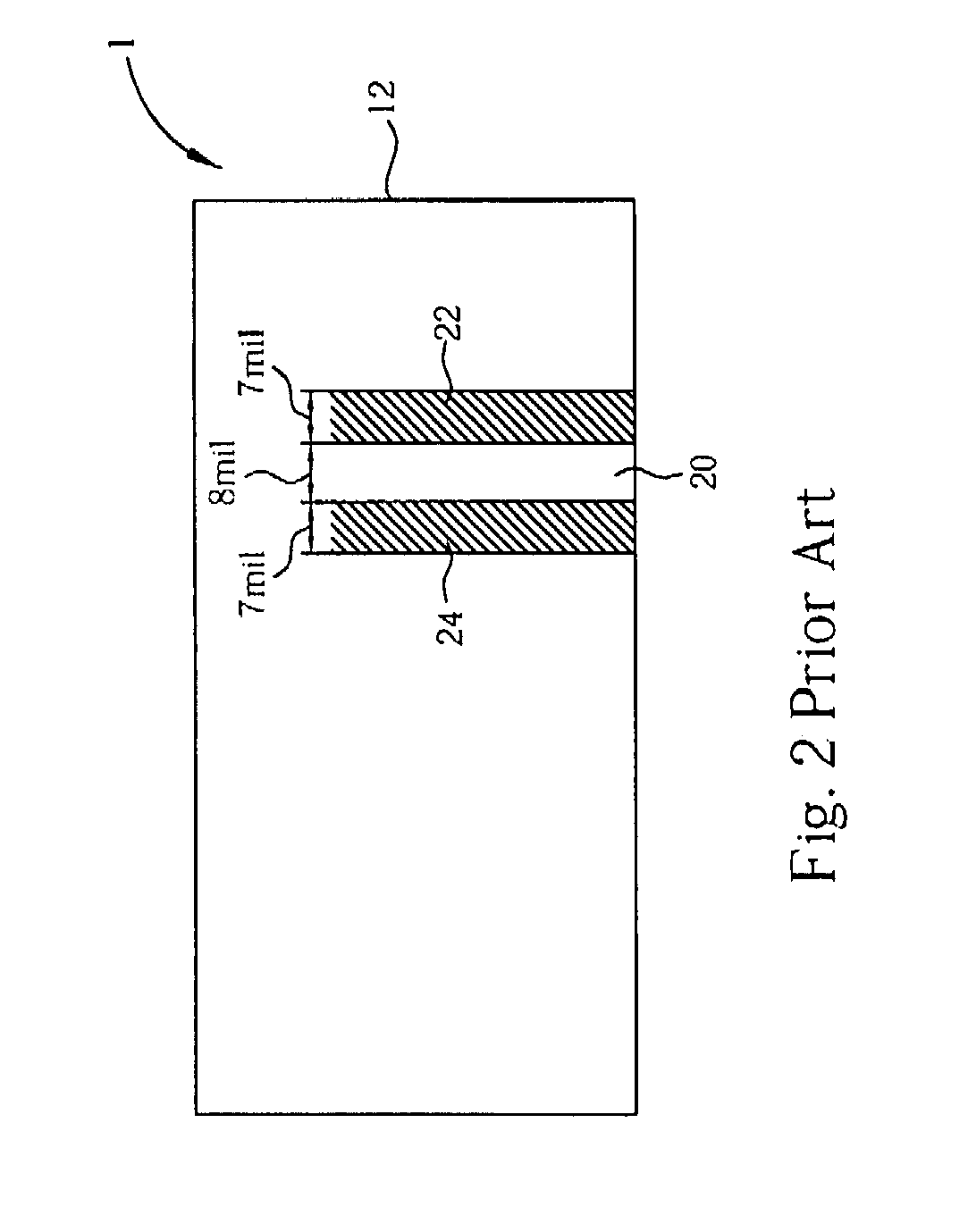Differential signal layout printed circuit board
a printed circuit board and signal layout technology, applied in the direction of printed circuit aspects, cross-talk/noise/interference reduction, instruments, etc., can solve the problems of difficult application to a typical 2-layer pcb, easy bending of pcb, and inconvenient cost reduction
- Summary
- Abstract
- Description
- Claims
- Application Information
AI Technical Summary
Problems solved by technology
Method used
Image
Examples
Embodiment Construction
[0015]Please refer to FIG. 3. FIG. 3 is a side view of a PCB 5 in the present invention. The PCB 5 comprises an insulation layer 51, a first layer 52 and a second layer 50. The first layer 52 and the second layer 50 are disposed on two sides of the insulation layer 51. On the first layer 52 is disposed a positive differential signal trace 54 and two ground traces 53 and 55, and a space 60 between the positive differential signal trace 54 and the ground trace 53 is the same as a space 61 between the positive differential signal trace 54 and the ground trace 55. Similarly, on the second layer 50 is disposed a negative differential signal trace 56 and two ground traces 57 and 59 corresponding to the positive differential signal trace 54 and the two ground traces 53 and 55 of the first layer 52, with all traces having the same width.
[0016]Please refer to FIG. 4. FIG. 4 is a side view of another embodiment of a PCB 6 in the present invention. The PCB 6 comprises two layers 50 and 52, and...
PUM
 Login to View More
Login to View More Abstract
Description
Claims
Application Information
 Login to View More
Login to View More - R&D
- Intellectual Property
- Life Sciences
- Materials
- Tech Scout
- Unparalleled Data Quality
- Higher Quality Content
- 60% Fewer Hallucinations
Browse by: Latest US Patents, China's latest patents, Technical Efficacy Thesaurus, Application Domain, Technology Topic, Popular Technical Reports.
© 2025 PatSnap. All rights reserved.Legal|Privacy policy|Modern Slavery Act Transparency Statement|Sitemap|About US| Contact US: help@patsnap.com



